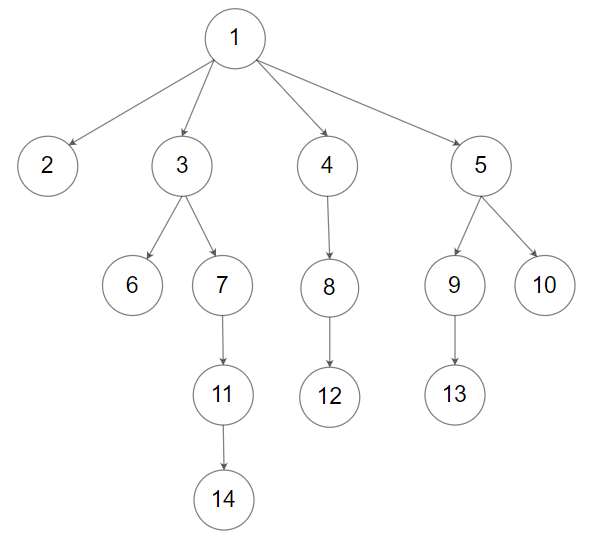LeetCode-in-Java
590. N-ary Tree Postorder Traversal
Easy
Given the root of an n-ary tree, return the postorder traversal of its nodes’ values.
Nary-Tree input serialization is represented in their level order traversal. Each group of children is separated by the null value (See examples)
Example 1:

Input: root = [1,null,3,2,4,null,5,6]
Output: [5,6,3,2,4,1]
Example 2:

Input: root = [1,null,2,3,4,5,null,null,6,7,null,8,null,9,10,null,null,11,null,12,null,13,null,null,14]
Output: [2,6,14,11,7,3,12,8,4,13,9,10,5,1]
Constraints:
- The number of nodes in the tree is in the range
[0, 104]. 0 <= Node.val <= 104- The height of the n-ary tree is less than or equal to
1000.
Follow up: Recursive solution is trivial, could you do it iteratively?
Solution
import com_github_leetcode.Node;
import java.util.ArrayList;
import java.util.List;
/*
// Definition for a Node.
class Node {
public int val;
public List<Node> neighbors;
public Node() {}
public Node(int _val) {
val = _val;
}
public Node(int _val, List<Node> _neighbors) {
val = _val;
neighbors = _neighbors;
}
};
*/
public class Solution {
private List<Integer> ans;
public List<Integer> postorder(Node root) {
ans = new ArrayList<>();
recursion(root);
if (root != null) {
ans.add(root.val);
}
return ans;
}
private void recursion(Node root) {
if (root == null) {
return;
}
for (Node child : root.neighbors) {
recursion(child);
ans.add(child.val);
}
}
}

